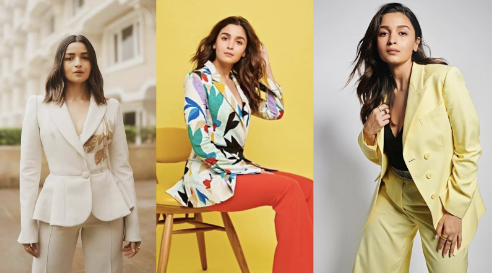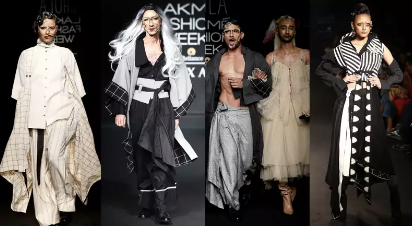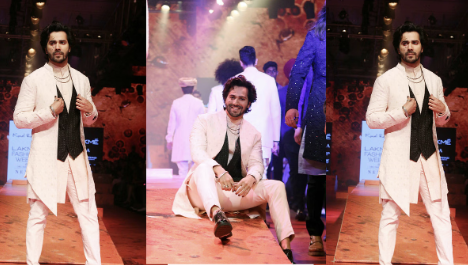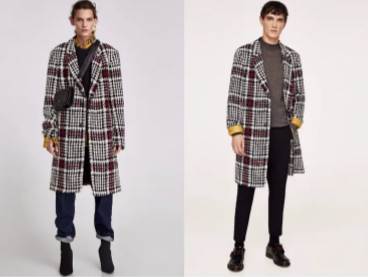
In the fast-paced 21st century, traditional notions of assigning genders to objects, colors, and concepts are losing ground. The once prevalent idea of adhering to binary gender identities for personal adornment is fading away as people strive for gender equality across various aspects of life, including jobs, colors, clothes, and habits.
Powerful Women, Negative Stereotypes for Men

The perception of power associated with women in pants and suits contrasts sharply with the negative stereotypes faced by men opting for heels and skirts. It’s disheartening to realize that society still downgrades a man in skirts and heels while viewing a woman in formal suits as authoritative. These biases speak volumes about societal norms that continue to persist.
Rise of Unisex Clothing in a Shrinking World
In today’s interconnected world, the understanding that clothes are just clothes is gaining traction. The demand for garments that transcend traditional male and female categories is on the rise. As people openly embrace diverse sexual and gender identities, there’s a noticeable surge in the sales of unisex clothing, indicating a shift in societal attitudes.
India’s Fashion Awakening

India, too, is in the middle of a fashion shake-up. We’re getting used to seeing boys in pink and girls rocking unique hairstyles and pants. It makes you wonder: is India ready to hop on the unisex fashion train, just like our European friends did?
The Untold Story of Unisex Fashion
Ever thought about where this whole unisex fashion thing started? Back in the 19th century, the first thing you’d think when you saw someone was, “Are they a guy or a girl?” Fashion played a role in spreading the idea of feminism, and unisex fashion was part of that journey. It aimed to blur gender lines, but guess what? It ended up making them more obvious. It’s funny how things turn out, right? Even in India, designers tried to mix things up with the Nehru jacket.
Riding the Unisex Wave in India

Unisex fashion is catching on in India, thanks to the
LGBTQ+ community and designers who are all about breaking the mold. Events like Lakme Fashion Week Winter-Festive
2018 showcased brands like Bobo Calcutta, Anaam,
The Pot Plant, and Chola the Label.
They’re adding a fresh twist to unisex clothing, and it’s catching the eye of the Indian fashion scene.
2018: A Year of Fashion Rebellion
In 2018, the fashion scene in India was buzzing with gender-fluid vibes. Designers like Anaam, The Pot Plant, Bloni, and Bobo Calcutta shook things up with queer models and unisex collections. It was like a rebellion against the usual fashion norms, pushing for inclusivity.
Bollywood’s fashion trailblazers

Our Bollywood stars are not staying behind
in this fashion revolution. Ranveer Singh, our
style icon, isn’t afraid to experiment. Floral
suits? Check. Skirt under a traditional
Indian sherwani? Double-check. Varun Dhawan
walked the ramp at Lakme Fashion Week,
breaking norms with a light pink suit,
kohled eyes, and black nail paint.
Indian designers are leading the charge.
A big shoutout to the Indian designers who are rewriting the fashion rules. I am in trouble.By KC, Nor Black Nor White, Bobo Calcutta, Huemn, and Bloni are like the Avengers of unisex fashion. They’re breaking stereotypes and making the runway a more inclusive space.
Fashion as a Way of Life

In the last few years, the fashion scene in India
went from “skirts are for girls” to “who cares,
wear what makes you feel awesome.”
Zara and H&M joined the unisex party,
creating collections that scream, “Fashion is for
everyone.” Indian designers are making
gender-fluid fashion not
just a trend but a way of life.
Opening Minds to Change
The fashion world in India isn’t just about celebrating diversity; it’s also about encouraging everyone to open their minds to new unisex trends. It’s not just a trend; it’s a lifestyle that’s gaining momentum. Ready to rock some unisex threads? What are your thoughts on gender-fluid fashion? Let’s talk because, in this ever-changing world of fashion, conversations matter.
